
22 May, 2019
Timor-Leste promotes faith-based tourism as pathway to Peace, Harmony and Friendship
Dili, Timor-Leste – In a high-profile bid to energise its national tourism policy and craft a unique selling proposition, Asia’s youngest country has reached out to its religious leaders to back a new faith-based promotion strategy built around the dozens of elegant Lady of Fatima shrines and churches dotting the country. At the first conference of its kind, organised in Dili on May 17, leaders of the Christian, Muslim, Hindu and Confucian faiths joined hands, physically and spiritually, in pledging support. The theme of “Peace, Harmony and Fellowship: Faith-based Tourism Development” witnessed an unprecedented show of unity for tourism as a conduit for alleviating poverty, creating badly-needed jobs and boosting the economy.
Indeed, the conference was a ground-breaking event in the annals of Asia-Pacific travel and tourism history. It began with an opening ceremony delightfully choreographed to symbolise the peace, harmony and friendship of all religions on a single stage, the Planet Earth. Abiding by the strong spirit of Peace, Harmony and Friendship that prevailed all through the day-long event, religious leaders said it was time for their respective faiths to stop “complaining about each other and … start looking for what’s good”. Those words directed a powerful message to Asian countries such as Myanmar, India and Sri Lanka where nationalist politicians and extremists of all ilk are actively stirring ethnic and religious strife.

Timor-Leste religious leaders in a show of solidarity with the future generation, prize winners of Public Speaking competition on the National Tourism Policy.
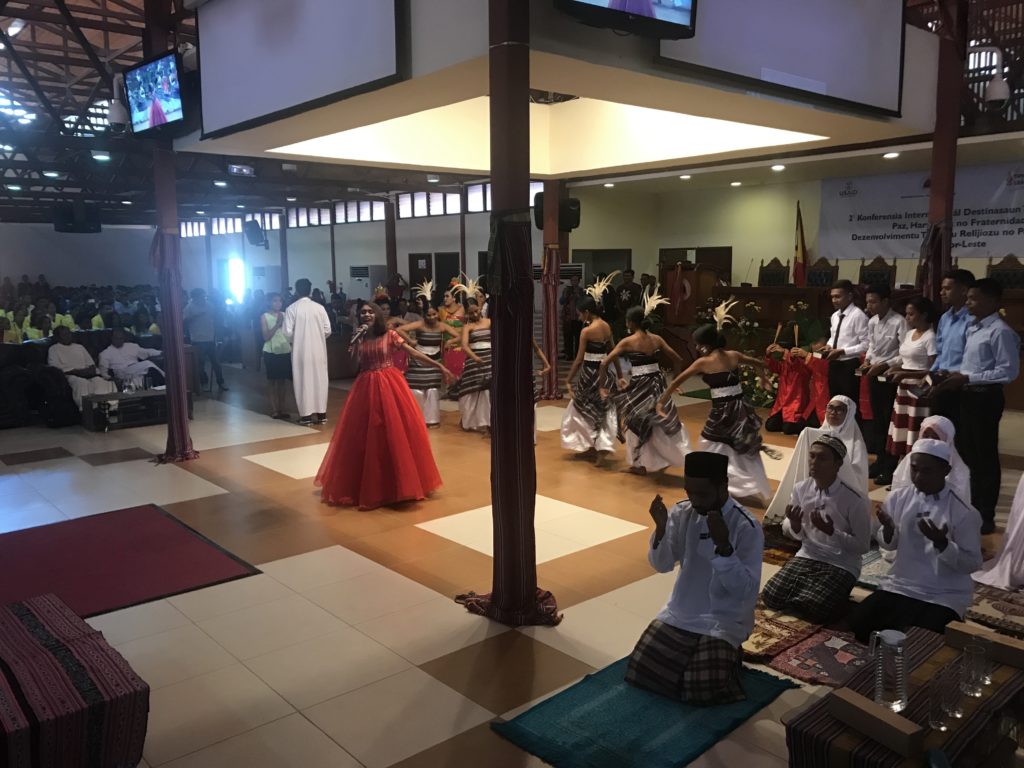
The opening ceremony: All the world is a stage with more than enough space for peoples of all faiths to live in Peace, Friendship and Harmony.
Giving the conference added lustre was the presence of Nobel Peace Laureate José Ramos-Horta, a former President and one of leaders of Timor-Leste’s independence movement from Indonesia. He, too, supported the conference theme and stressed the need for Timor-Leste to capitalise on its untapped spiritual, cultural and natural assets and develop the requisite infrastructure and human capital to boost tourism arrivals.
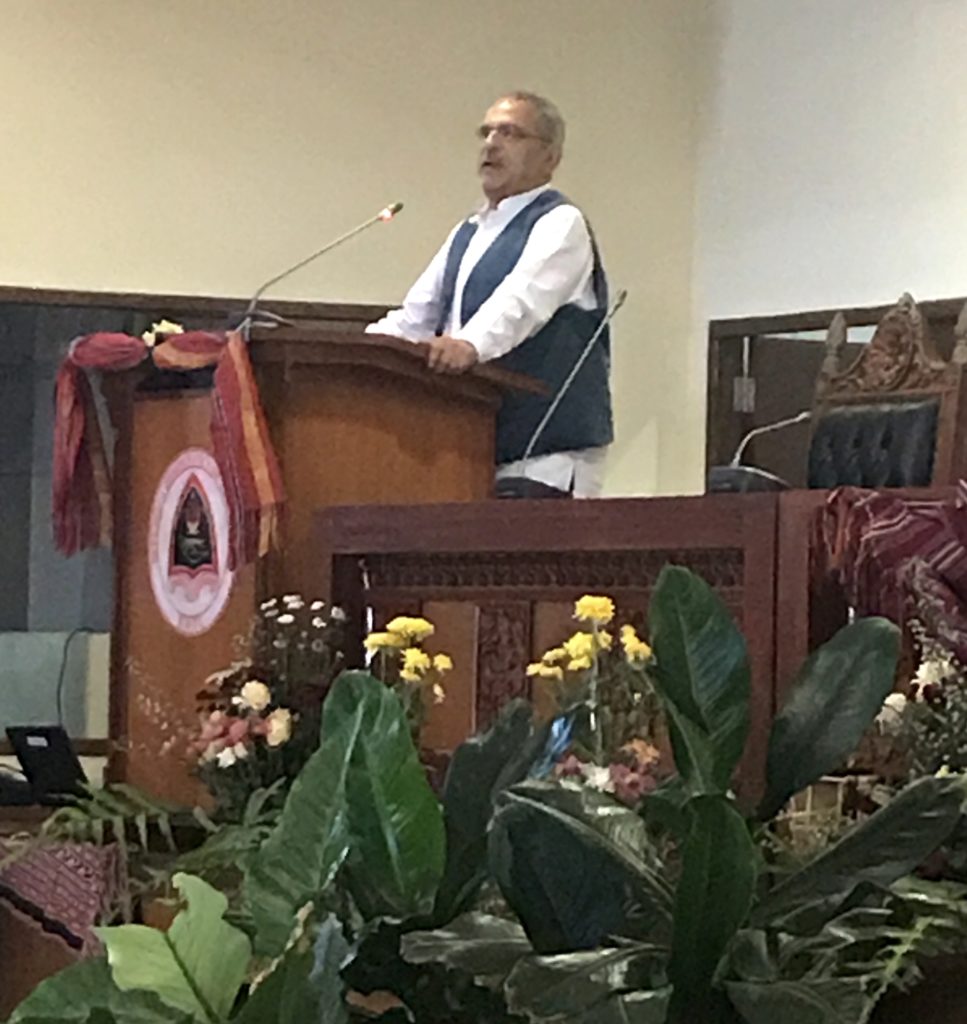
Dr Ramos-Horta
Funded by the US Agency for International Development (USAID), the conference was organised under its Tourism For All Project in collaboration with the Dili Institute of Technology (DIT) and the Ministry of Tourism, Commerce and Industry. Mr. Peter Semone, the project’s Chief of Party, said, “The event will promote the concept of faith-based tourism in Timor-Leste among key stakeholders across the tourism value chain as well as leaders of faith-based organizations.” He said it was designed “to promote Timor-Leste’s competitiveness as an international tourism destination while preserving its unique environmental and cultural heritage.” He appealed vigorously for tourism to get a higher policy priority and for firmer measures to enhance visa facilitation and aviation access.

Dr Manuel Vong
Dr Manuel Vong, a former Tourism Minister and DIT Board Member, who played a key role in organising and managing the event, said, “Faith-based tourism is one of the five niche segments identified in the Timor-Leste Strategic Development Plan 2011-2030 along with eco and marine, historical and cultural, adventure and sports, and conference and convention. It is also aligned with the Timor-Leste National Tourism Policy entitled Growing Tourism to 2030 – Enhancing a National Identity, which posits five P’s including: Priority, Prosperity, Protection, Partnership and People.” In line with those plans and policies, the expected outcome of the May 17 conference “was to express the spirit of ‘peace through tourism’ and help form a strategy and action plan to further develop this high potential niche tourism product in the country.”
According to the CIA World Factbook, Timor-Leste has a population of 1.3 million, of whom more than 60% are under 25. It is 97% Catholic, 2% Protestant/Evangelical, 0.2% Muslim and the rest, other faiths. Most of the population is concentrated in its Western part, bordering Indonesia, and especially around Dili. The population growth rate is 2.3% with a high fertility rate of 4.67 children/woman. The unemployment rate among youths aged 15-24 is a staggering 13.2%. Although the country has an abundance of natural tourism assets such as beaches and forests, it has dozens of Lady of Fatima shrines nationwide. A captive source-market for visitors to these shrines lies right next door in Indonesia, which has 15 million Catholics.
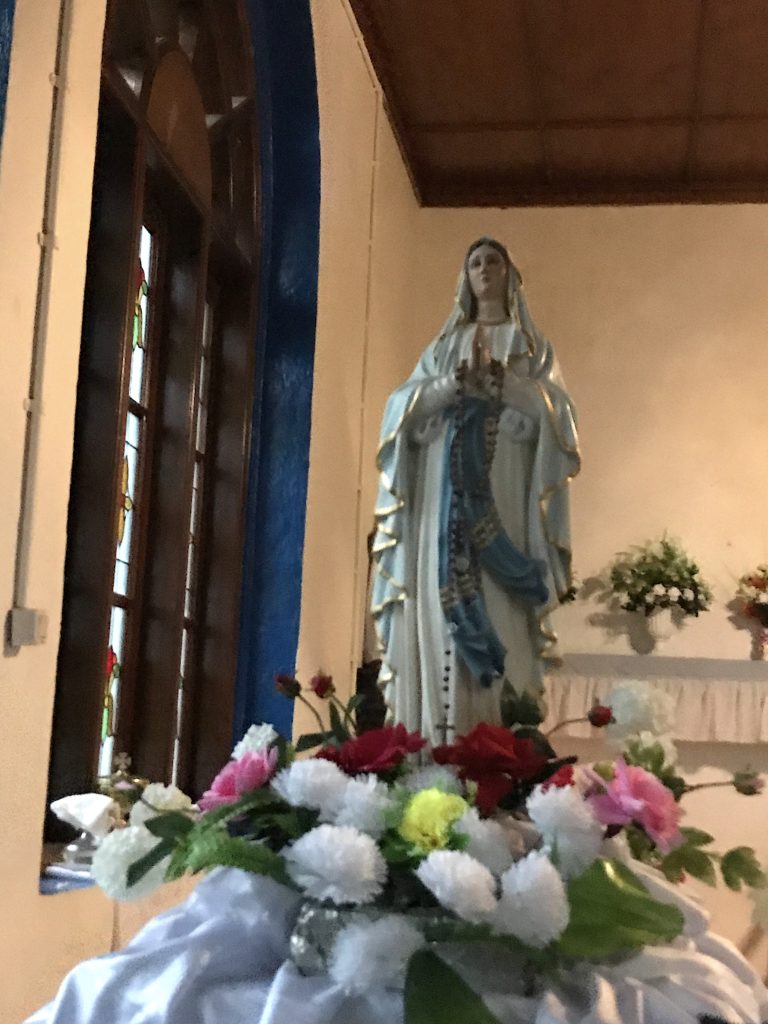 |
 |
Says a recent Asian Development Bank report, “Since achieving independence in 2002, Timor-Leste has made excellent progress in state building. However, while access to essential services (particularly electricity) has improved dramatically, key human development indicators remain among the lowest in Southeast Asia and the Pacific. The country’s prospects hinge on prudent and effective use of revenue from offshore petroleum production to finance investments in the physical capital, human capital, and institutions needed to develop a sustainable non-oil economy.”
U.S. Ambassador to Timor-Leste Kathleen M. Fitzpatrick said in her opening remarks, “Timor-Leste already has resources to develop its tourism sector. As part of its cultural heritage, the country has many attributes that could help develop faith-based tourism as a vehicle for economic diversification.”
The tone and spirit of the conference was set by USAID Mission Director Diana B. Putman, who cited a 2011 report from the UN World Tourism Organization showing that of 600 million religious and spiritual voyages in the world, 40 percent are in Europe, but fully half – 50 percent – are in Asia. She narrated a personal story which she said “embodies the title of this conference.”
“From 2005 to 2007, I was based in Jordan for USAID. The Jordan River forms the boundary between Jordan – a largely Muslim country – and Israel, homeland of the Jewish faith. My husband and I visited the river, which holds major significance in Judaism and Christianity and is an icon in a number of cultures.
“As we dipped our hands in the holy waters, I was struck by the fact that it was Jordanians who were providing protection for the site. Here we were in a Muslim country visiting a site sacred to Jews and Christians presumably with our fellow tourists of all faiths. Together. In peace. With our own thoughts but in communion with each other through our presence at the Jordan River. Truly, at that moment, multiple faiths enjoyed peace, harmony and fellowship in the simple act of visiting a river.
“So, we might not have the Jordan here (in Timor-Leste), but we have something valuable – willing pilgrims. We also have a willing group of political and religious leaders here today ready to work in harmony to develop faith-based tourism in Timor-Leste.”

Dr Pedro Valinho Gomes
Coming in all the way from Portugal, Dr Pedro Valinho Gomes, Director of the Pilgrims Department of the Shrine of Fatima, about 120 kms north of Lisbon, further bolstered the case for the business potential. He said an estimated seven million pilgrims visited the Shrine in 2018 to participate in the celebrations. That did not include the millions of untabulated non-pilgrim visitors. The 2018 turnout was lower than 2017 when around 10 million pilgrims came to mark the Centenary year of the founding of the Shrine. Dr Gomes, who is also Director of the Centre for Culture and Christian Formation of the Diocese of Leiria-Fatima, said pilgrim numbers are growing strongly from Indonesia, Korea, India and the Philippines. He said visitation is marked by significant seasonal peaks and troughs in line with the various religious occasions, as well as the August – September vacation period in Europe.
This editor, too, was one of the keynote speakers in view of my unmatched coverage of spiritual tourism, since my first presentation accurately forecasting its rise at a PATA Travel Mart in Singapore in October 2003. Noting my visits to the holy spots of all global religions, I quoted the Holy Bible in forecasting a future when the “meek would inherit the earth”. The poor always bore the brunt of the problems caused by the rich and powerful, be it global warming, financial turmoil, or wars and conflict. None of the grandiose dreams of geopolitical and economic nirvana projected after the 1989 fall of the Berlin Wall had materialised. Instead, today, the world is seeing more instability in the form of trade wars and sabre-rattling in the Gulf. If things take a turn for the worse, Timor-Leste would definitely be affected. “In which case, whom will its leaders hold accountable?” I asked.
In pursuit of a new business model, the world is focussing on the 17 UN Sustainable Development Goals, I said. Their core objective is to create more peaceful, just, sustainable, balanced societies. I added, “But when you look closely, exactly what are the UNSDGs, except the Bible and all the holy books in an academic, management-buzzword format? Peace and harmony is also what Christianity is all about. So are Hinduism, Buddhism, Jainism, Sikhism, Confucianism, Taoism, Islam etc. They are all designed to promote peaceful, just, sustainable, balanced societies.”
I also pointed out that peoples of all faiths are generally quite happy to live in peace until they get stirred up by fascist politicians, religious extremists and other trouble-makers.
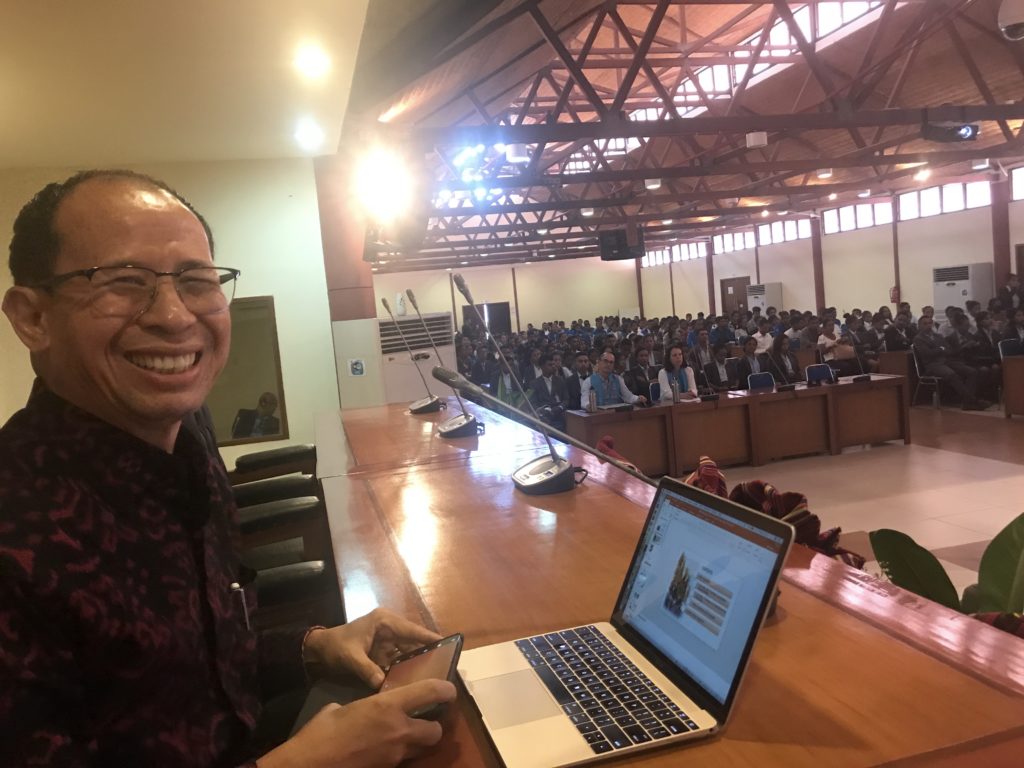
Prof Dr I. Gede Pitana
Prof Dr I. Gede Pitana, former Director of the Bali Tourism Authority and currently Advisor to the Indonesian Tourism Minister, made a presentation on Balancing Spirituality and Tourism through Tri Hita Karana. He trashed claims that tourism had eroded the local Balinese Hindu culture, as repeatedly made by academics since the late 19th century. Today, he said, instead of decaying, Balinese Hindu culture is very much alive and in fact had been strengthened by tourism.
After lunch came the best part of the conference when all the religious leaders shared a panel to voice their views. They included: Bishop Angelo Sansinha (Catholic), Father Lorenso dos Santos (Protestant), Mr. Siu Peng Lay (Kong Fu Tze), K. Budiadnya (Hinduism) and H. Mohammed Anwar (Muslim).
Moderated by Dr Manuel Vong, the religious leaders all made the same points. The conference had opened their minds about the importance of tourism for national development, and the role of religious leaders in maintaining the peace and harmony that underpins it. They said Timorese from all walks of life had united for the independence struggle, and now need to keep this spirit of unity alive for the sake of national development. In line with the conference theme, such harmony and fellowship could become a marketing angle in itself, ready to be showcased globally and setting an example for other countries.
Said one of the religious leaders, “If we keep complaining about each other, nothing will get done. Tourism needs tolerance and unity. We should never fight, but rather start looking for what’s good (amongst us). This is the heritage that we need for the sake of our future generations, and for peace and harmony.”
They also agreed that the conference content has given them tremendous food for thought. One religious leader said he had been motivated to visit the many popular religious spots mentioned during the conference, and see ways by which infrastructure facilities and services can be improved to accommodate visitors.

The religious leaders at the panel discussion, with moderator Dr Manual Vong on the left.

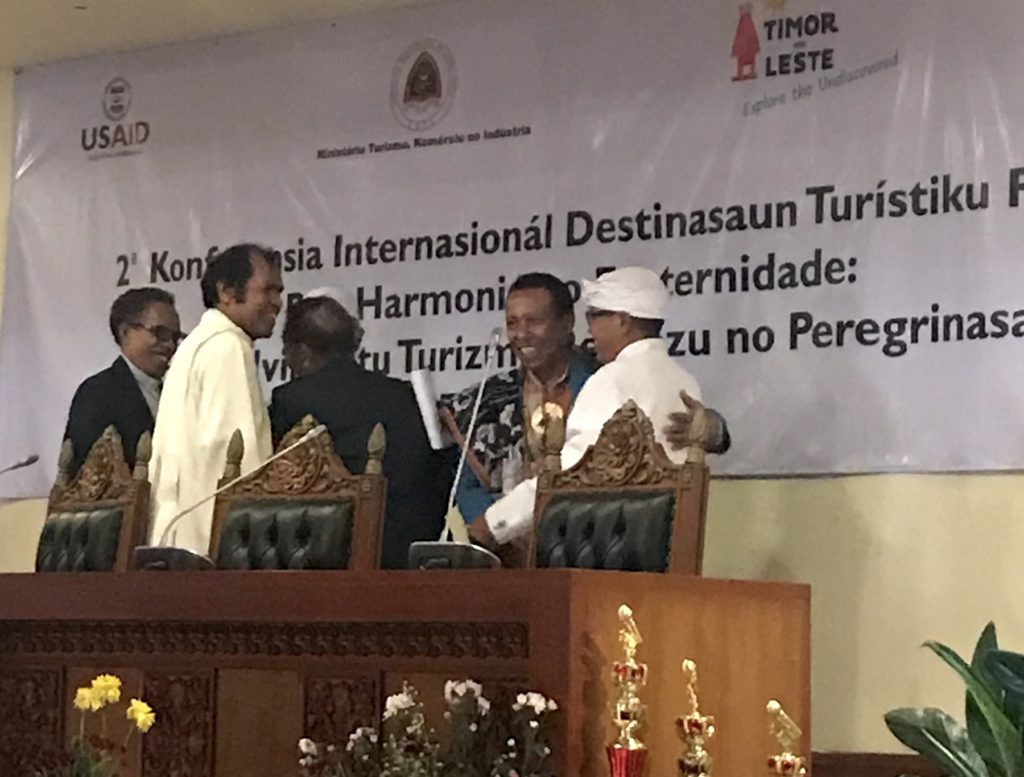
A heart-warming show of camaraderie after the Panel discussion.
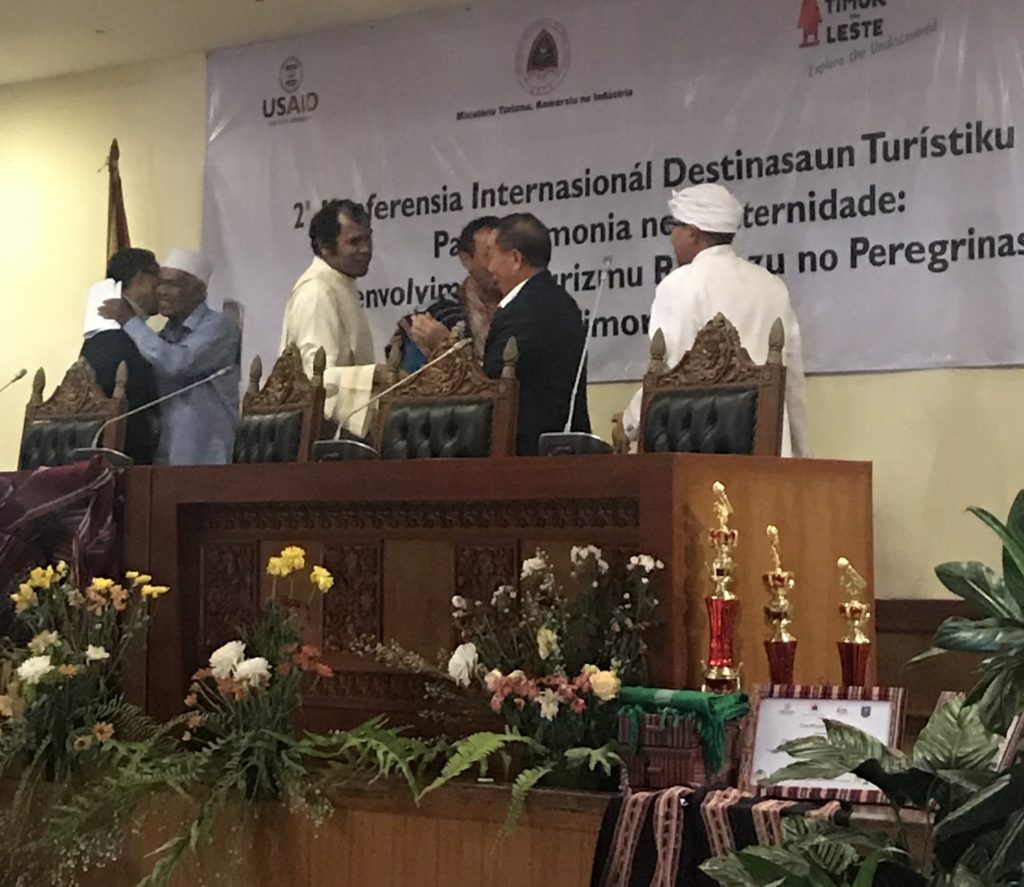
A heart-warming show of camaraderie after the Panel discussion.

A heart-warming show of camaraderie after the Panel discussion.
The conference ended with the announcement of the five student winners of a speaking competition on the National Tourism Policy. Two students were appointed Turizmu Ba Ema Hotu (Tourism for All) Ambassadors for 2019-2020, and given a chance to share their Next-Gen perspectives with the conference delegates.
Speaking in Tetun, the Timorese language, Mr. Arnaldo Soares Fernandes of Universidade Nacional Timor Lorosae (UNTL), cited the need for transportation infrastructure improvements as well as the quality of accommodation. He also recommended a balance between the “hardware” improvements and commensurate upgrades of “software” in tourism service standards. He said Human Capital Development was required to change the mindsets of the Timorese and enhance their knowledge base in the interests of building tourism.
Ms Domingas Ressurreição da Costa Ximenes of the Díli Institute of Technology, delivered her presentation in flawless English. She said Timor was a small country with a lot of poverty, which could be alleviated via tourism and visitors to the rural areas, especially those with a cluster of tourist attractions.
The most important thing, she said, was to ensure that all Timorese stakeholders, religious and business leaders, academics and government officials all worked together to protect indigenous culture and preserve the environment. The USAID project slogan “Tourism For All” itself was designed as a guarantee for the development of Timor-Leste and promote prosperity. She said she would do her best to work with the stakeholders to promote the following agenda: 1. Communicate and coordinate with all branches of the government to ensure financial support for small tourism businesses; 2. Help local communities especially the young to be more active and creative and participate in development of tourism; 3 Promote Timor-Leste as a new destination in ASEAN and the Asia-Pacific; and 4. Work hard to protect Timorese culture and heritage.

The winners of the Public Speaking competition (from left) 1. Arnaldo Soares Fernandes – Universidade Nacional Timor Lorosae (UNTL). 2. Domingas Ressurreição da Costa Ximenes – Díli Institute of Technology (DIT) both selected as Tourism For All Ambassadors. 3. Dulce Maria Julia Freitas Mendonça (1st Place) UNTL; 4. Maria Gabriela de Canossa Oliveira (2nd place) ICR; 5. Remegio Pereira da Cruz (3nd place) UNITAL.

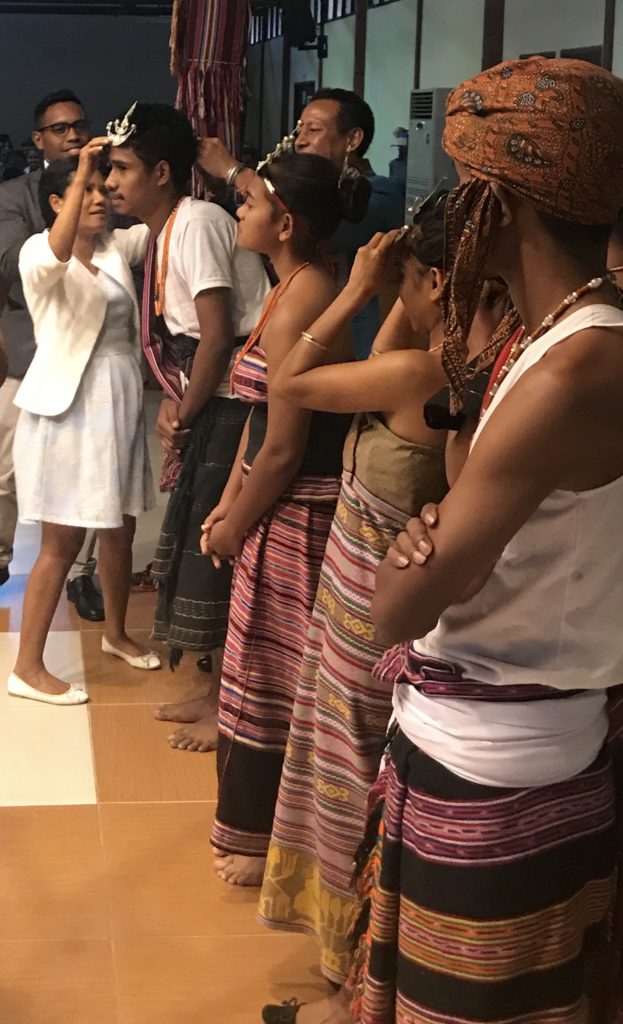
Conclusion
Now comes the hard part – converting the lofty plans, policies and visionary statements into reality. A tourism working group has been set up amongst the religious leaders to advance the agenda. That move alone is probably a global first. The most important role it can play is to act as a strong check-and-balance mechanism in preserving the peace, confronting political trouble-makers and ensuring a fair, equitable and sustainable development process that reaps the advantages of tourism and keeps out its nefarious side, such as child prostitution, land-grabs, encroachment, environmental destruction, etc.
As I pointed out in my presentation, Timor-Leste can build on its status as Asia’s youngest country and exploit the “last mover advantage.” This means learning from the mistakes, successes and failures of the many first-mover countries in the neighbourhood, embracing the UN Sustainable Development Goals and working with church-backed groups to show that it can be done. As one of the religious leaders said, Timor-Leste prides itself for preserving its socio-cultural-ethnic fabric. Ensuring this remains in place will be the top order of the day.
This landmark conference was built around the far-sighted theme of “Peace, Harmony and Fellowship: Faith-based Tourism Development”. Only if Peace, Harmony and Fellowship is assured will tourism be able to deliver on its promise of jobs, economic growth and prosperity. There was no doubting which comes first. In today’s conflict-ridden era, that awakening alone could be a game-changer for global tourism agendas.
See more images of the conference and its associated functions below.
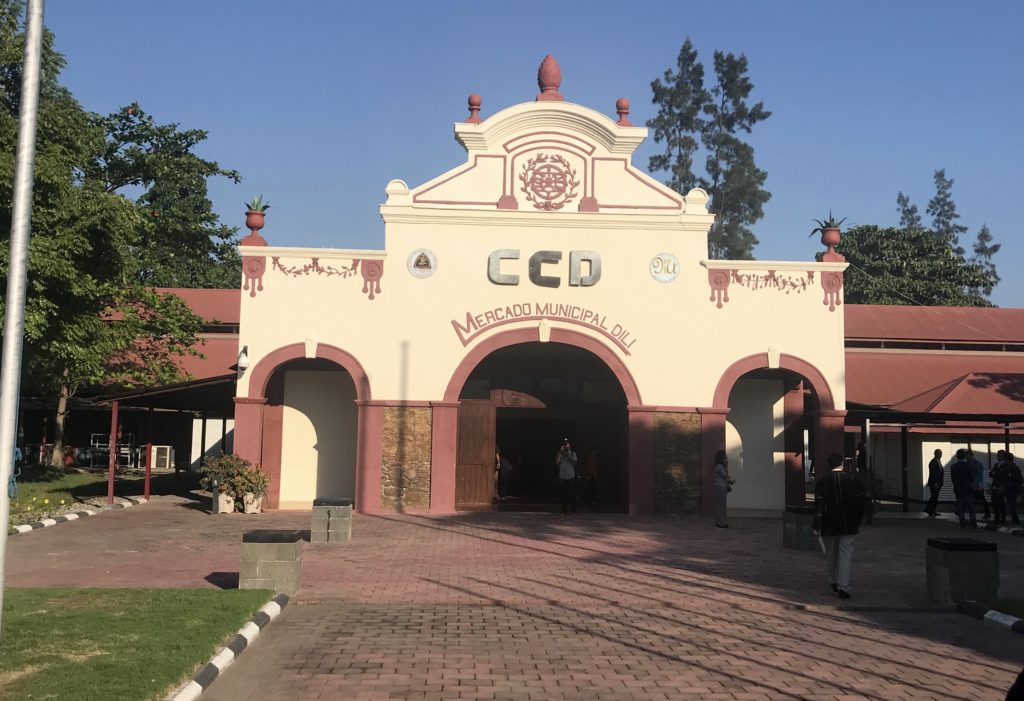
The conference venue.
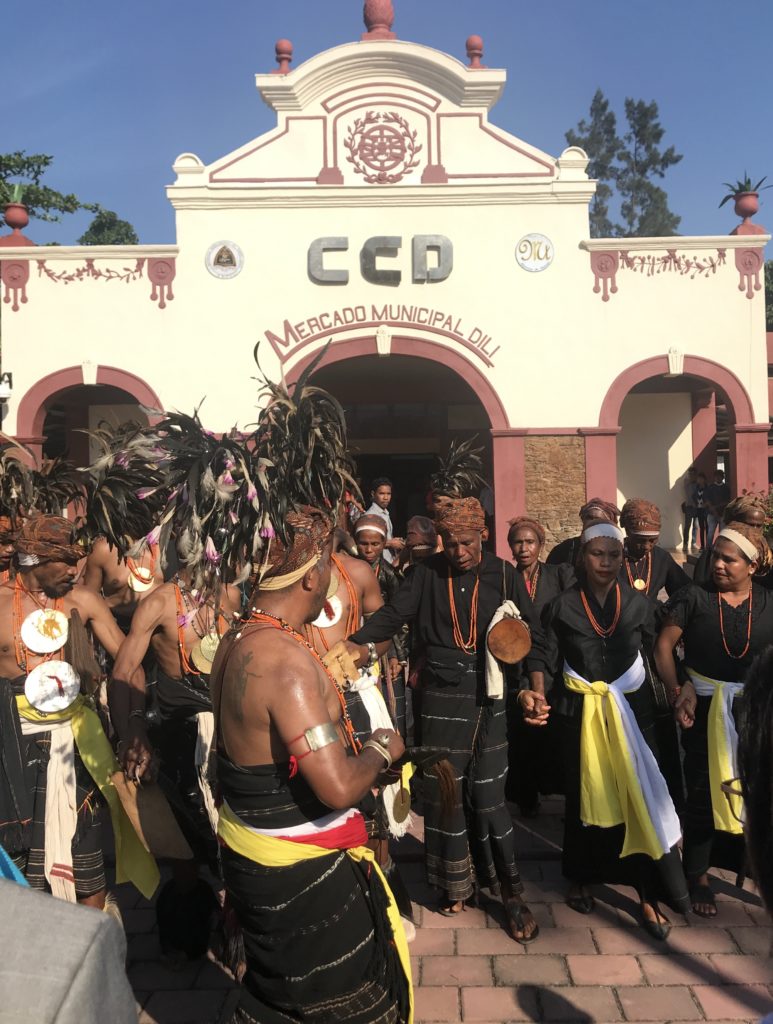
A traditional Indigeneous welcoming ceremony.

Executive Editor Imtiaz Muqbil with Dr Ramos-Horta.

The young university students enjoyed taking photographs with the speakers to put up on their Facebook pages.

A Portuguese dance by the Timorese students.
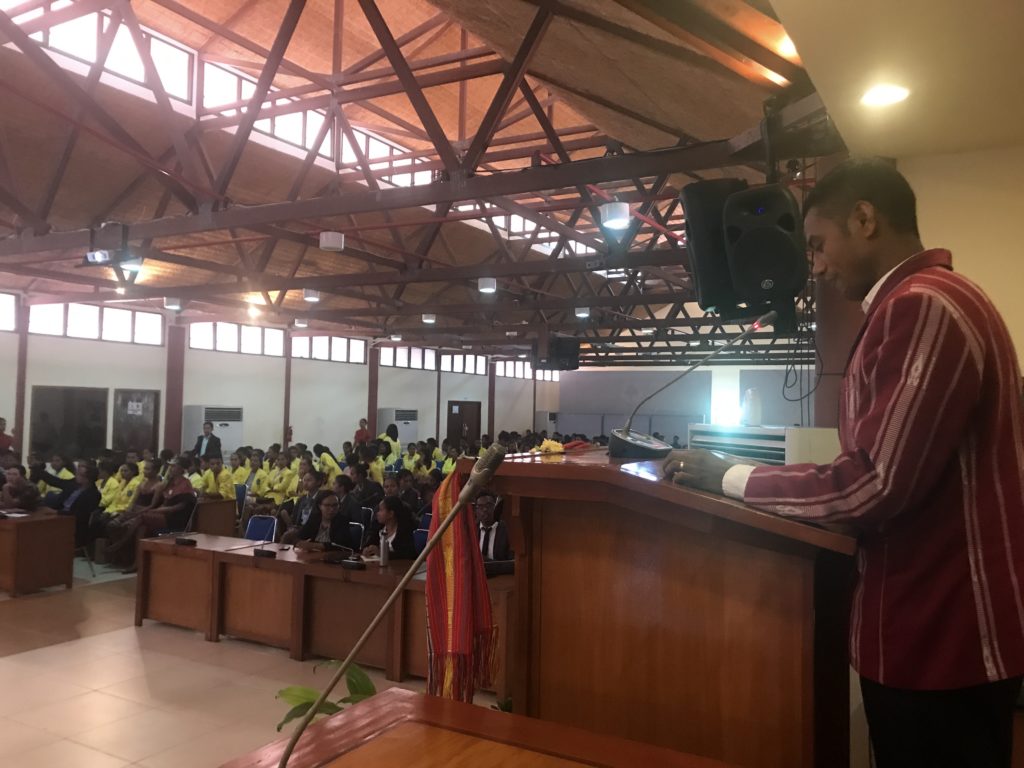
The conference hall is designed in the shape of a cross. The podium is in the centre. This is the view to the right..

….and the front, looking directly ahead at the entrance from the podium.



Liked this article? Share it!